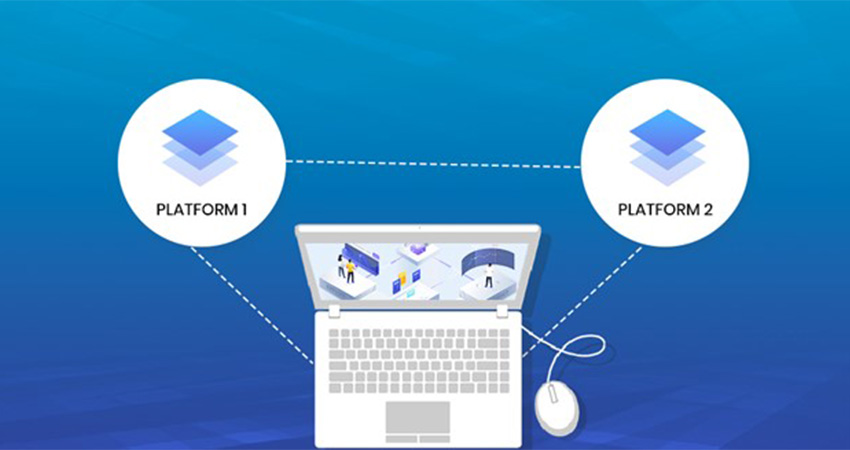Digital optimization is the way forward from the wasteful morass of the ecommerce replatforming treadmill, chasing endless upgrades and the latest shiny object. In fact, what’s needed is a true digital transformation. Let’s break this down.
Even ecommerce businesses, which were built for the internet, need to replatform to stay ahead of obsolescence. But this perpetual need for reinvention can lead to constant churn, where you always spend years just to catch up to past innovations.
Maybe you’re chasing the next new platform, thinking it will enable you to do a much better job of supporting your customer experience requirements. Or maybe you’ve decided to undertake a headless migration, providing the flexibility to assemble high-quality, best-of-breed components in ingenious ways. Sure, such projects might be a lot of work, but they’re bound to pay off in the end – right?
I’m here to give you some bad news. There is no such thing as an “end” to digital transformation and you’ll never ever be truly “done,” because innovation moves too fast. This means most any ecommerce replatforming project that takes more than six months will leave you in the dust by the time it’s finished. And contrary to what you might hear, no replatform takes less than six months.
For years companies have clung to this mindset: “We just have to get through this ecommerce replatforming, and we’ll be good to go!” These projects tend to move at a glacial pace, but organizations are lured by the false illusion of a finish line. This is the legacy of a pre-SaaS mindset. With today’s pace of innovation, it doesn’t matter if you’re on the oldest or the newest platform, headless or no – you’ll be riddled with FOMO from the second you’re done, wanting to add more capabilities and further differentiate your customer experience.
In a post-SaaS world, the only shot you have at truly future-proofing is to constantly maintain the ability to test and deploy new storefront capabilities quickly and easily. A fundamental perspective shift is needed such that you emphasize superior adaptability over that elusive, fleeting and false feeling of completeness. This is what we mean when we say that the new digital transformation is digital optimization. It’s a perpetual, incremental and inclusive process.
But how can you maximize your adaptability, or your ongoing ability to fine-tune and optimize? Consider these three salient points:
The Next Replatform, Headless or No, Won’t Be Your Last
This is true if you think that’s the only way to stay on top of changes. Know that going headless may not be the be-all and end-all, especially considering the investment of time and resources. A headless architecture provides much greater flexibility, with the presentation layer decoupled from the commerce engine. This means frontend changes can be made without requiring backend changes, getting marketers past the IT chokepoint and allowing faster changes.
But frontend digital commerce issues can still linger beyond your headless migration, as there will certainly be new capabilities coming down the innovation pipeline. More than likely, a year or so after you get to headless you’ll be tempted to replatform to the next disruptive technology.
Include, Empower Ecommerce Managers, Business Users
According to Salesforce’s most recent State of Commerce Report, it often takes weeks or months to change a digital storefront. For most organizations, this is due to developer constraints. Our recent survey of marketing and IT professionals found that 81% believe their storefront improvements are hamstrung by a lack of available developer resources. This includes 53% of respondents who’ve already gone headless. While this path may provide greater flexibility, it does so potentially at the cost of needing more ongoing developer resources to reap those benefits.
This lack of available developer resources (and consequently, speed) is antithetical to the current pace of business, which is increasingly being driven by social media. Consider the example of the Stanley cup, where a company over 100 years old quickly and unexpectedly found its insulated, 40-ounce tumbler cup to be sought after by Gen Zs around the world. In the event that a product suddenly and unexpectedly goes viral, you must be positioned to capitalize immediately. You can’t afford (in the best case) days or weeks or months for creative, merchandising and development to launch a targeted campaign. Ecommerce managers and business users need to be empowered to make changes like this on their own, in minutes.
Focus on Delivering Incremental Value Over Time
Digital transformation in the form of a full ecommerce replatforming can take way too much time and require too big of an investment all at once, without proving and/or bringing value along the way. Here, another mindset shift is in order. You may want certain benefits from a full migration, but the approach of “rip and replace” (and wait) is all wrong. Ecommerce organizations need to prioritize which benefits come first, adopt the right technology and set themselves up to deliver incremental value over time – day after day, week after week, quarter after quarter.
This means that, in the background, you can still be transforming by continuously adding capabilities and progressively migrating off existing systems. But this way, you will be delivering value to your business all along, not making everyone, including your customers, wait to see improvements.
Parting Thoughts
As is often said, “The race for excellence has no finish line,” and this is especially true in the hyper-competitive world of ecommerce. If you think that a “Big Bang” digital transformation project is going to solve all of your challenges for good – enabling your ecommerce organization to ride off into the sunset without a care for the future – you’re in for a big surprise.
Innovations are happening every day that are taking the ecommerce world by storm, from social commerce and livestream commerce, to Buy Now Pay Later (BNPL) and AI-powered personalization. In such a world, what matters most is ongoing adaptability, not the false illusion of an ironclad finish date. It may seem counterintuitive, but if you focus on adaptability, you’ll wake up in a year having achieved everything you wanted from your ecommerce replatforming, faster, with less risk, and with continuous improvement along the way.
Ryan Breen is CTO of Zmags

